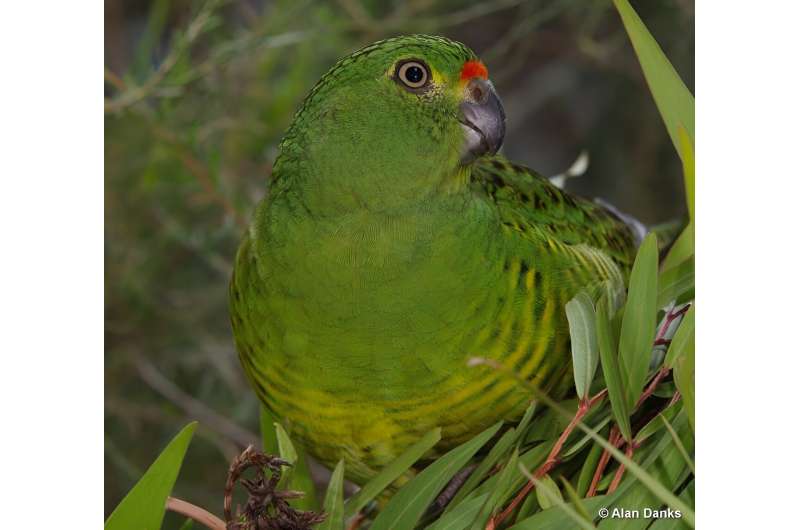This article has been reviewed according to Science X's editorial process and policies. Editors have highlighted the following attributes while ensuring the content's credibility:
fact-checked
trusted source
proofread
Plant pathogen threatens rare parrot

One of Australia's most endangered parrots is facing a new threat after being found to carry a destructive pathogen normally associated with several varieties of crops.
James Cook University Microbiologist and Senior Lecturer Dr. Subir Sarker found the plant pathogen Pantoea stewartii (P. stewartii) has infected the rare western ground parrot. The study has been published in Microbial Genomics.
It's one of the world's rarest parrots, with less than 150 thought to be alive in the wild, and they are only found in a remote Western Australian national park.
"Our finding marks a ground-breaking milestone, as it represents the first reported instance of a P. stewartii genome originating from an avian source, and the first reported P. stewartii genome within Australia," Dr. Sarker said.
"This is an important observation, in particular concerning the biosecurity risks associated with P. stewartii."
A recognized pathogen worldwide with quarantine measures enforced in more than 60 countries, P. stewartii typically affects crops including maize, sweetcorn, jackfruit, rice and sudangrass—resulting in crop yield losses.
After an ill western ground parrot in quarantine at Perth Zoo failed to test positive for a number of diseases commonly associated with birds, zoo staff reached out to Dr. Sarker for assistance in identifying the cause of the parrot's illness in late 2022.
Dr. Sarker used next-generation sequencing technology to detect for microbiomes, which encompass both bacteria and viruses, in a sample from the parrot.
Wellington-based Institute of Environmental Science and Research computational biologist Dr. Rhys White and his team then analyzed the data produced by Dr. Sarker's lab, which found the presence of P. stewartii in the western ground parrot.
"Ensuring the well-being of these exceptional birds carries significant importance, not solely for their individual welfare but also for the wider ecosystem they inhabit," Dr. Sarker said.
"We are confident that this study presents a potential avenue for advancing our understanding of the challenges confronting the western ground parrot population, and makes an important contribution to ongoing conservation efforts."
Dr. Sarker warned that broader research into the pathogen was urgently needed to understand how it transmits through bird feces into pre-existing wounds, which would aid in the development of a standardized diagnostic test.
"It is crucial to gain insights into potential pathogens that impact not only these creatures but also extend to our ecosystems, plant life and even human health," he said.
"This discovery underscores the biosecurity risks associated with P. stewartia in Australia and demands urgent investigation."
More information: Rhys T. White et al, A discovery down under: decoding the draft genome sequence of Pantoea stewartii from Australia's Critically Endangered western ground parrot/kyloring (Pezoporus flaviventris), Microbial Genomics (2023). DOI: 10.1099/mgen.0.001101
Provided by James Cook University


















